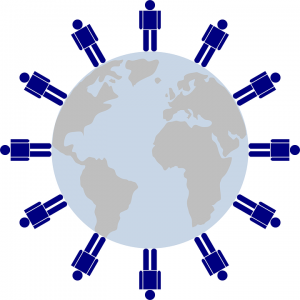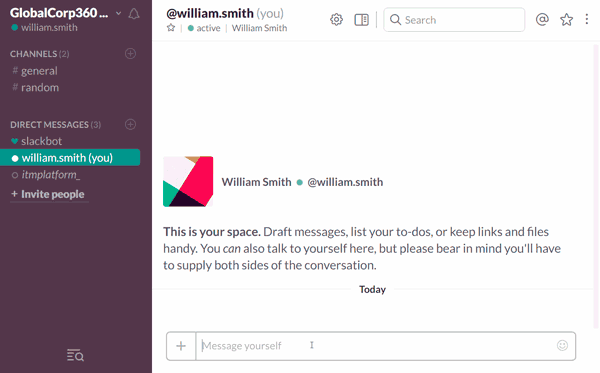 The word productivity has never been as fashionable as it is today and it becomes extremely important when it comes to fierce competition in a market with so many competitors.
The word productivity has never been as fashionable as it is today and it becomes extremely important when it comes to fierce competition in a market with so many competitors.
But, contrary to what many people think, productivity is not only related to producing larger quantities of products or serving more customers. Productivity today involves efficiency and, in order to achieve it, it is necessary to invest in technological innovations to guarantee the quality of the service and products, optimizing the processes. It is the well-known of doing more, with less and without losing quality. An arduous task, but perfectly achievable if the correct resources were used.
Workflow
Even before you set goals to increase productivity, you need to know the real working conditions of the company, your workflow, to identify the most overburdened, time-lagging, and employee sectors, and to find bottlenecks in the production process.
Workflow is the sequence of the work process, the process by which each recent activity must go through to get to a conclusion. This process may involve several people and sectors of the same company and, therefore, it is extremely important to establish rules and to create automation mechanisms for tasks that allow time saving and avoid reworking. The leaner the workflow, the better its efficiency.
There are a few ways to assess whether your company's workflow is efficient or not. In order to do so, you can use some simple indicators that will alert you if they start to roll back.
- Compare what was planned with what was carried out - If the company can accomplish more than 75% of what was planned, the workflow can be considered efficient;
- Measure the number of hours dedicated to each activity - It is possible to find out the ideal time to perform each task and to identify possibilities to reduce the time without losing quality;
- Measure rework - can be caused by several factors, but the consequences will always have an impact on productivity. You must identify the reason for the mistakes and adjust the processes to reduce the company’s rework.
There are many tips and techniques that help increase your company's productivity so let's talk about some of them.
Pomodoro Technique
This technique is based on the idea of dividing workflow into small blocks (of 25 minutes, called “pomodoros”) that allow to increase concentration and to give more agility to the brain. The first step in applying this technique is to create a list with pending tasks. You need to use a timer, or alarm clock, set on 25 minutes. Choose one of the tasks from the list and work during the 25 minutes marked on the timer without any interruption (no social networks or messages on the phone). When the alarm rings, stop and take a 5-minute break in which you are told to stand up, walk a little, and have a glass of water, for example. After the 5-minute break, take up work for another pomodoro (25 minutes). And every four pomodoros take a longer break, about 30 minutes, before returning to work. After you finish a task from your list, mark it as “done”.
This technique is interesting to ensure focus on work or study, but mainly can be used as a planning tool, because over time you will be able to identify how many pomodoros you spend to perform a certain task and so you can better plan your use of time.
It is also possible to make adaptations to the method, but it is necessary to maintain the main idea that is the total focus on a single activity during a period and to make intervals between the pomodoros.
Project Management System
Project management is essential for the expansion of the productive capacity of the company and with its use there will be more focus and control in the services offered to clients. Good project management software allows the creation of task lists in an effortless way and the possibility of managing them demonstrates the progress of projects so that all those involved on them can follow and verify their commitment and that of their work team. In addition, it performs task-time measurements, compares planned and performed activities, and provides an up-to-date schedule for managing the company's human resources. The project manager will monitor the project stages and monitor their progress, managing costs, deadlines and difficulties presented by the team. The project management system greatly helps companies keep up-to-date schedules and deliver quality services with more organization and productivity.
ERP Management System
It is a tool that helps companies a lot in business management, being a great differential for small and medium enterprises in overcoming the challenges and obstacles of everyday life. The ERP system allows the complete integration of company activities essential for its proper functioning as stock control, sales system, invoice issuance, tax payments and cash flow control. The business management system still gathers all the information about the company and generates reports on its current and future situation helping the managers in the important decisions.
By following these tips your company will be able to increase productivity and profitability while maintaining the quality of services and products offered. Do not waste time and put these ideas into practice.


 While hiring talent from across the globe is easier than ever, this frictionless environment shifts a strenuous pressure into the coordination needs with newcomers. And, paradoxically, at the same time it's becoming increasingly difficult to retain talent and meet the professional expectations of millenials in terms of flexibility, work-life balance and career development.
While hiring talent from across the globe is easier than ever, this frictionless environment shifts a strenuous pressure into the coordination needs with newcomers. And, paradoxically, at the same time it's becoming increasingly difficult to retain talent and meet the professional expectations of millenials in terms of flexibility, work-life balance and career development. 



 Obviously, one of the most fundamental tasks of the project manager is to resolve project issues as they arise.
Obviously, one of the most fundamental tasks of the project manager is to resolve project issues as they arise.